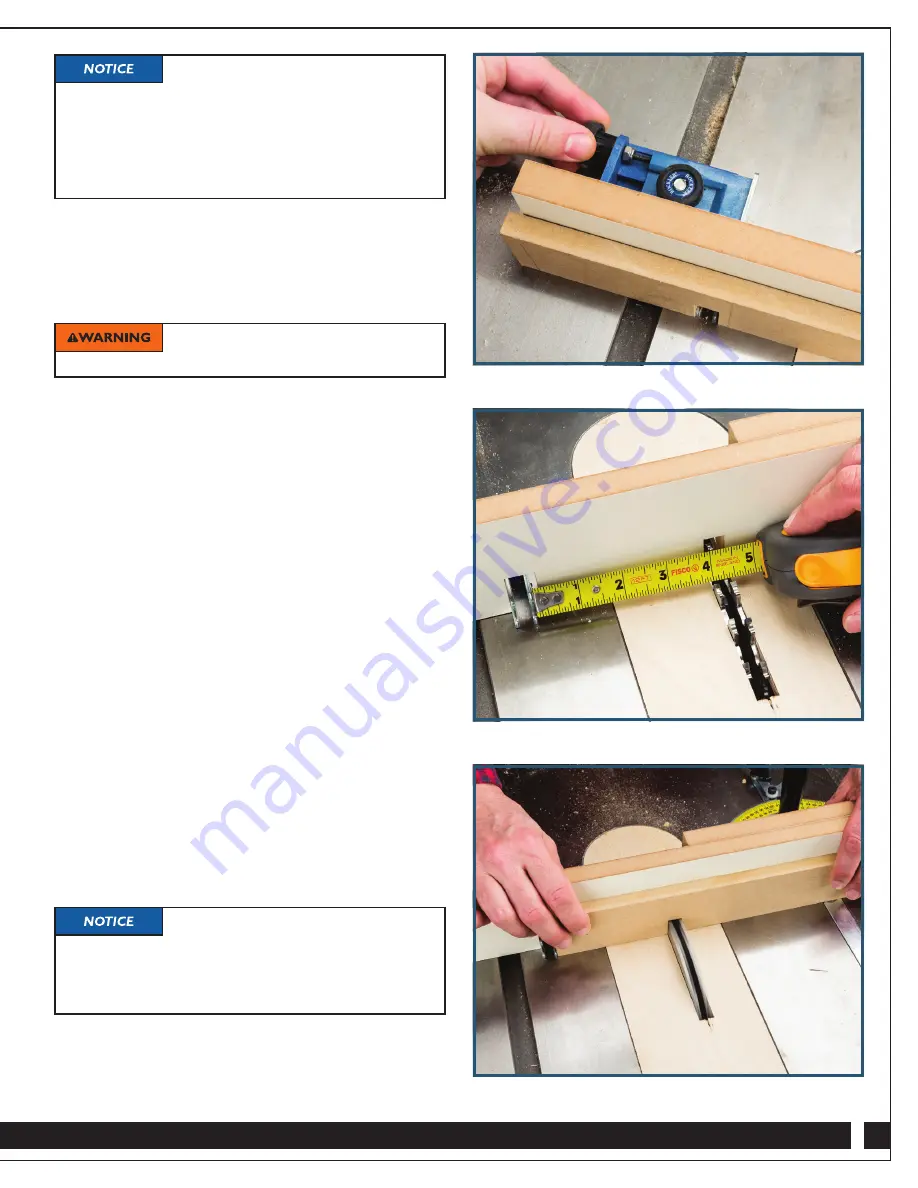
7
The Cross Lap Jig is not designed for use
with wobble-style dado blades.
2. Determine the precise thickness and width of your
workpieces (all workpieces must be the same thickness and
width). These dimensions are important because the width
of your half-lap joints needs to match the thickness of your
workpieces and the depth of the joints needs to equal half the
width of your workpieces (or height, when the workpieces
are on their edges).
The Cross Lap Jig is capable of producing
joints for material up to 1" thick and 3" wide (where the joint
would be 1
1
⁄
2
" deep). If you want to cut joints for material
wider than 3", the Large Sacrificial Miter Gauge Fence (2)
would need to be replaced with a taller fence you make
yourself. (Cutting height can be no more than half the height
of the fence.)
To make it easier for you to determine the
interval between cuts, Rockler has developed a free online
caluclator. Just go to www.crosslap.rockler.com, enter
some key information about your specific project, and the
calculator will generate the measurement.
3. Follow the directions that came with your dado blade set and
table saw to set up the dado stack to match the thickness of
your material. Set the blade’s cutting height to half the width
of your workpieces (or height, when the workpieces are on
their edges).
4. Verify the setup by using your saw’s miter gauge, locked
at 90˚, to make test cuts in scrap pieces that are the same
thickness and width as your final workpieces. Make any
necessary adjustments until you have test pieces with a
precise fit; keep a correctly fitted piece for the following
jig setup steps.
5. With the saw off and your miter gauge clear of the blades,
reinstall the jig on your miter gauge.
6. Set the width of the Adjustable Keys on the Key
Assembly (3) by using your one of your final test pieces
as a gauge. Slip the notch over the Keys; loosen the Locking
Knob on the Key Assembly; turn the Micro-Adjusting Knob
until the Adjustable Keys are up against the edges of the
notch in your test piece; and tighten the Locking Knob
once the precise setting has been achieved. For thinner
cuts only one key may be used. You want a precise but
not overly tight fit.
Fig. 8.
7. To set the jig to make repeated cuts at the same interval,
measure from the left edge of the Adjustable Keys and make
a mark on the fence at the desired distance. Loosen the
5/16"-18 Easy-to-Grip Knobs (6) and slide the Large
Sacrificial Miter Gauge Fence (2) until the mark lines up
with the dado set’s right cutting edge. Then fully tighten
the 5/16"-18 Easy-to-Grip Knobs to lock the jig in position.
Fig. 9.
8. To verify the settings, make additional test cuts. Start by
positioning a test piece against the Large Sacrificial Miter
Gauge Fence (2), butting the end against the Adjustable
Keys. Hold or clamp the test piece securely and advance
the miter gauge and jig to make the first cut.
Fig. 10.
Fig. 8
Fig. 9
Fig. 10


























